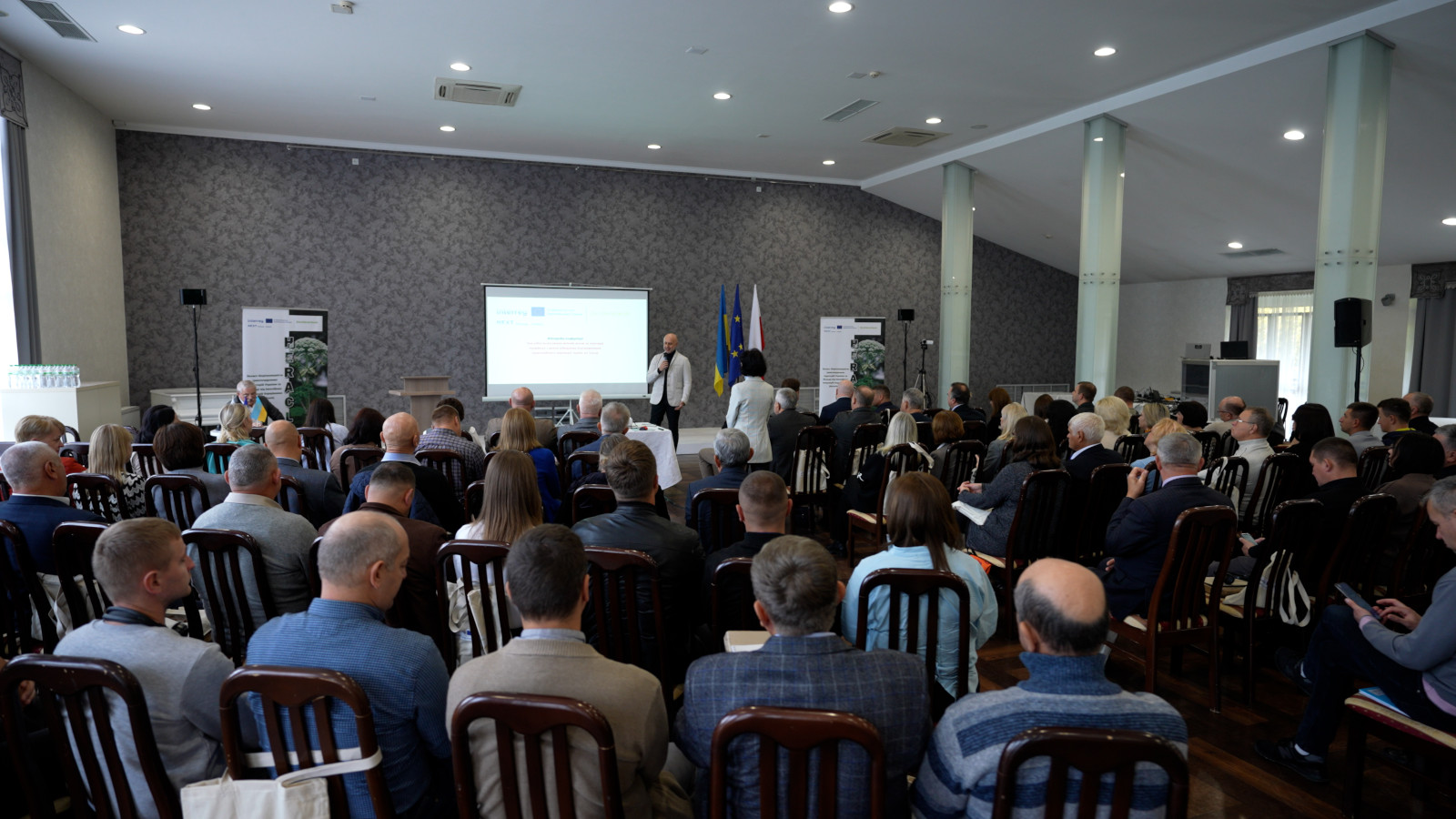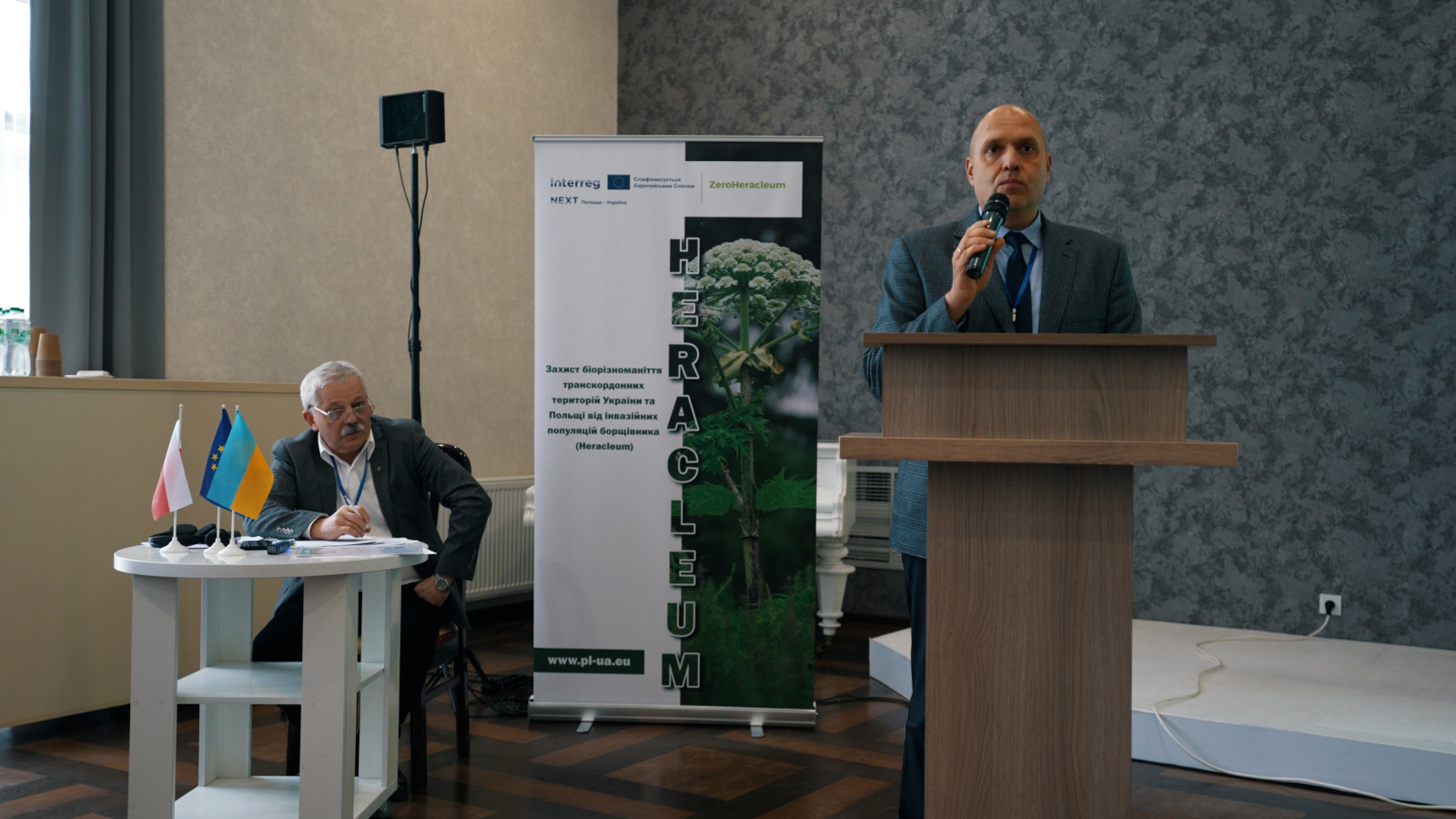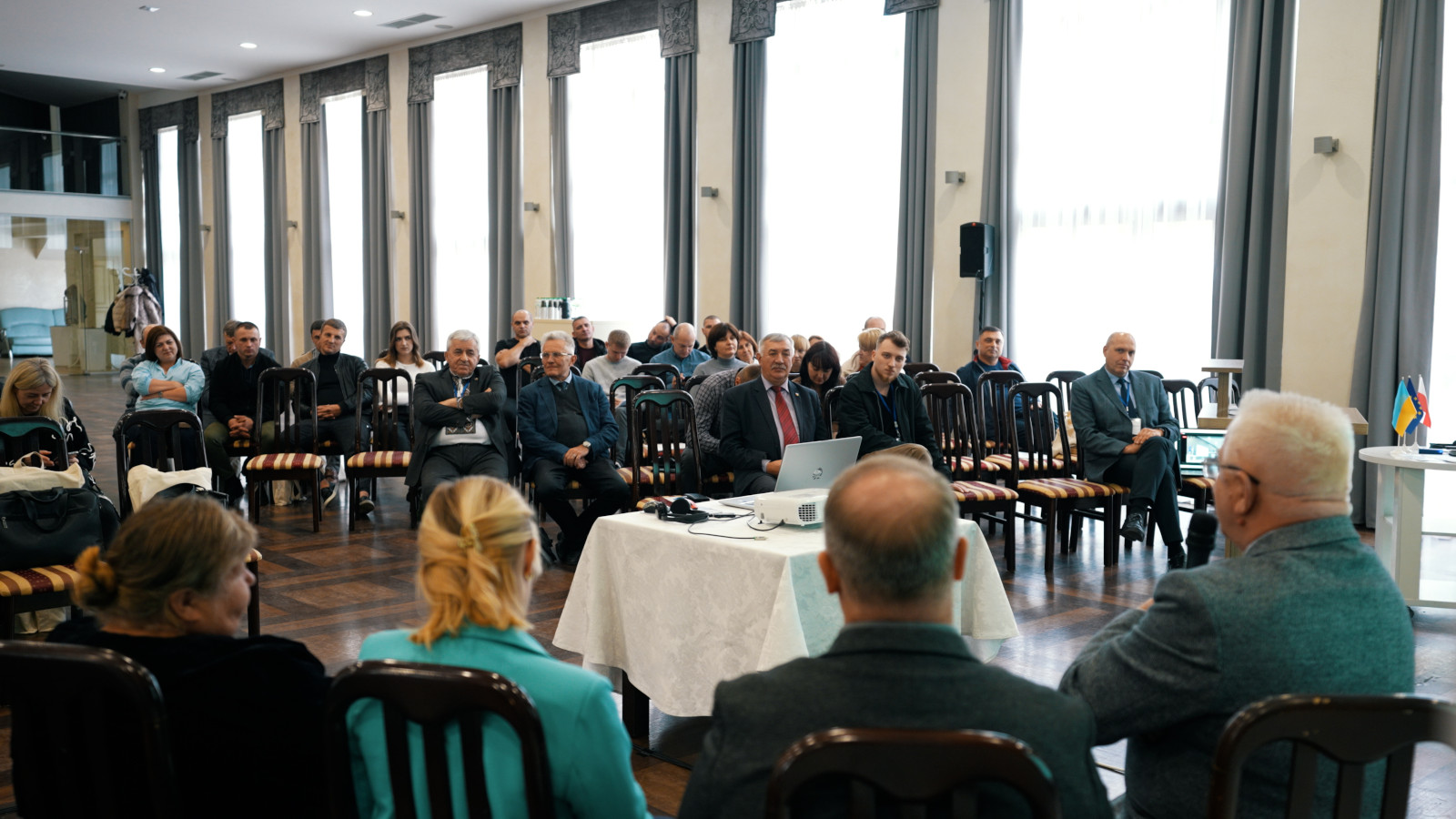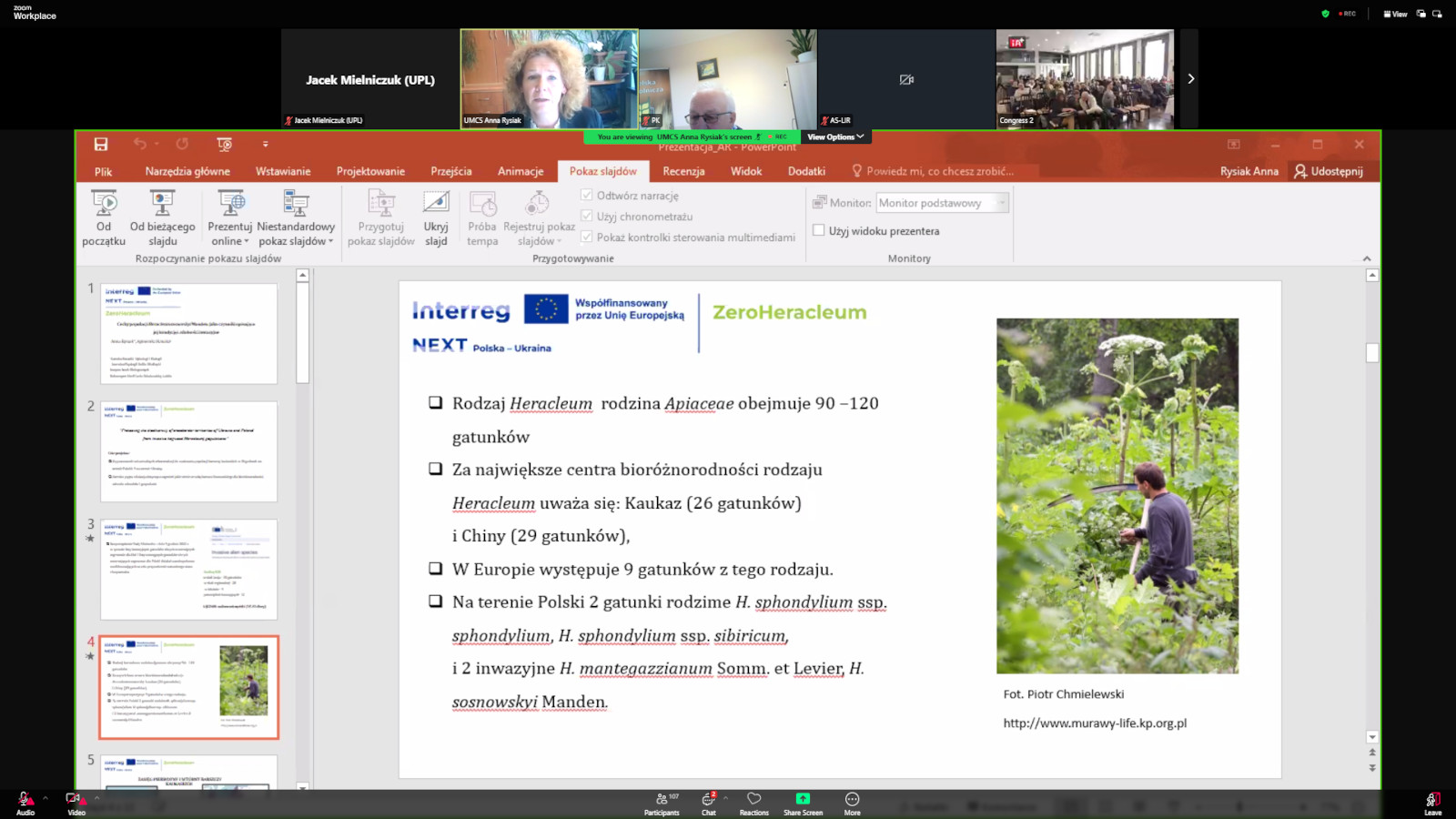
International conference in Lviv related to the implementation of the Interreg NEXT Poland-Ukraine ZeroHeracleum project

On 16-17 October 2025, an international scientific conference “Applied application of methods for influencing the hogweed population to restore biodiversity of cross-border territories of Ukraine and Poland” was held in Lviv in connection with the implementation of the project “Protection of biodiversity in cross-border areas of Ukraine and Poland against invasive populations of hogweed (Heracleum)” PLUA.01.03-IP.01-0008/23, financed by the European Union under the Interreg NEXT Poland-Ukraine 2021-2027 Programme.


photo gallery
The aim of the conference was to present the assumptions implemented in the individual stages of the project, discuss the methods used to combat hogweed (Heracleum) populations and their effectiveness, as well as to develop joint methodological recommendations for its elimination in the cross-border areas of Ukraine and Poland. The conference was also an opportunity to establish cooperation between scientists from both countries and representatives of local authorities, territorial communities, farmers and landowners.
The conference was held in a hybrid form: on-site at the Halicka Korona hotel in the suburbs of Lviv and online on the Zoom platform. For security reasons, the planned trip of the Polish delegation from the University of Life Sciences in Lublin and the Lublin Chamber of Agriculture was cancelled at the last minute after Russia intensified its attacks on western Ukraine. In total, over 200 participants from Ukraine and Poland registered for the conference.

The conference participants were officially welcomed by:
- Maksym Kozytskyi – Head of the Lviv Regional Military Administration;
- Yurii Kholod – Head of the Lviv Regional Council;
- Yurii Radelitsky – Head of the Standing Committee on Agro-Industrial Complex, Entrepreneurship and Investment of the Lviv Regional Council;
- Krzysztof Lukyanowicz – Consul of the Republic of Poland in Lviv;
- Vasyl Khimyak – Head of the Joint Secretariat of the Interreg NEXT Poland-Ukraine Programme 2021-2027;
- Gustaw Jędrejek – President of the Lublin Chamber of Agriculture in Lublin;
- Ivan Parubchak – Rector of the Stepan Grzycki Lviv National University of Veterinary Medicine and Biotechnology;
- Halina Lipńska on behalf of Prof. Krzysztof Kowalczyk – Rector of the University of Life Sciences in Lublin;
- Wiesław Gruszecki on behalf of Prof. Radosław Dobrowolski – Rector of the Maria Curie-Skłodowska University in Lublin;
- Liudmyla Honcharenko – Head of the Department of Agricultural Development in Ukraine;
- Kateryna Krykunenko – AKIS System Coordinator, Ukraine.
The conference consisted of a series of scientific reports and discussion panels during which a wide range of topics related to threats and methods to reduce the occurrence of dangerous and invasive hogweed populations were presented. The participants discussed recommendations for a common methodology for combating hogweed populations in various landscape areas of the PL-UA border region.

There were also thematic sessions during which smaller working groups discussed how municipalities, businesses, non-governmental organisations, scientific and educational institutions, and advisory services in Ukraine and Poland can join environmental initiatives to protect biodiversity and find sustainable solutions to combat hogweed.
During the conference, representatives of the University of Life Sciences in Lublin presented their reports (* – presenting author):
- Mariusz Kulik*, Anna Rysiak , Agnieszka Hanaka, Mirosława Chwil, Hałgorzata Haliniarz, Sylwia Andruszczak, Piotr Kraska, Dorota Gawęda, Ewa Kwiecińska Poppe, Adam Gawryluk, Teresa Wyłupek: The impact of invasive Sosnowski’s hogweed on local biodiversity – field research methodology in Poland (presentation in Polish)
- Małgorzata Haliniarz*, Sylwia Andruszczak, Piotr Kraska, Dorota Gawęda, Ewa Kwiecińska Poppe – Field methods for controlling Sosnowski’s hogweed (presentation in Polish)
- Edyta Paczos-Grzęda, Sylwia Sowa*, Joanna Toporowska Anteta Koroluk: Assessment of genetic diversity in Sosnowski’s hogweed populations – research methodology (presentation in Polish)
- Szymon Chmielewski*, Andrzej Bochniak: Remote sensing methods for detecting the occurrence of Sosnowski’s hogweed – methodological framework for the ZeroHeracleum project (presentation in Polish)
- Adam Gawryluk*, Mariusz Kulik, Teresa Wyłupek, Helena Ćwintal, Małgorzata Haliniarz, Sylwia Andruszczak, Piotr Kraska, Dorota Gawęda, Ewa Kwiecińska-Poppe, Mirosława Chwil, Anna Rysiak, Agnieszka Hanaka, Helena Ćwintal – Hogweed Educational activities among school and university students (presentation in Polish)
- Teresa Wyłupek*: Invasive species and current activities of government institutions in Poland (presentation in Polish)
Presentations were also given by other project partners:
- Anna Rysiak*, Agnieszka Hanaka (UMCS): Characteristics of the Heracleum Sosnovskyi population. Manden as factors describing its condition and invasive capabilities (presentation in Polish)
- Agnieszka Hanaka*, Anna Rysiak (UMCS):Assessment of the diversity of secondary metabolites of Sosnowski’s hogweed and their impact on human health (presentation in Polish)
- Michał Skiba*, Gustaw Jędrejek, Piotr Kuranc (Lublin Chamber of Agriculture): Sosnowski’s hogweed in Poland: an invasive giant from the Caucasus (presentation in Polish)
- Ivan Shuvar* (Lviv National University of Veterinary Medicine and Biotechnology): Historical background and harmfulness of Sosnowski’s hogweed in Ukraine (presentation in Ukrainian)
- Korpita Hanna* (Lviv National University of Veterinary Medicine and Biotechnology): Occurrence and modern methods of combating Sosnowski’s hogweed (presentation in Ukrainian)

The full conference program is available at the link.
More information about the project can be found at https://up.lublin.pl/en/zero-heracleum/
University of Life Sciences in Lublin
13 Akademicka Street, 20-950 Lublin
VATIN 712 010 37 75
REGON no. 000001896
ePUAP: /UP-Lublin/SkrytkaESP
